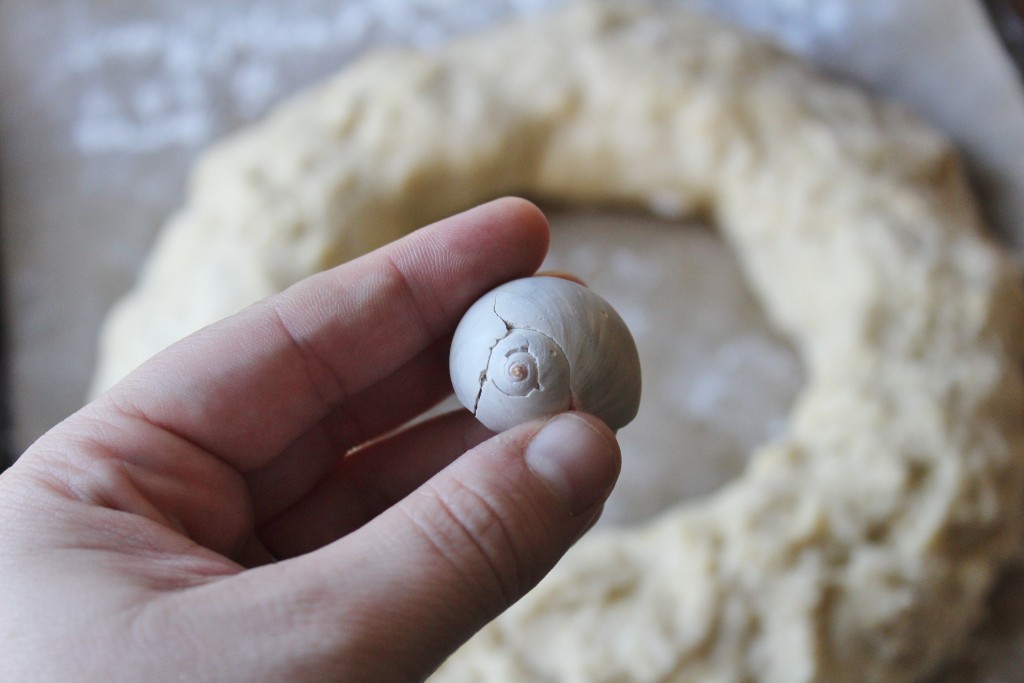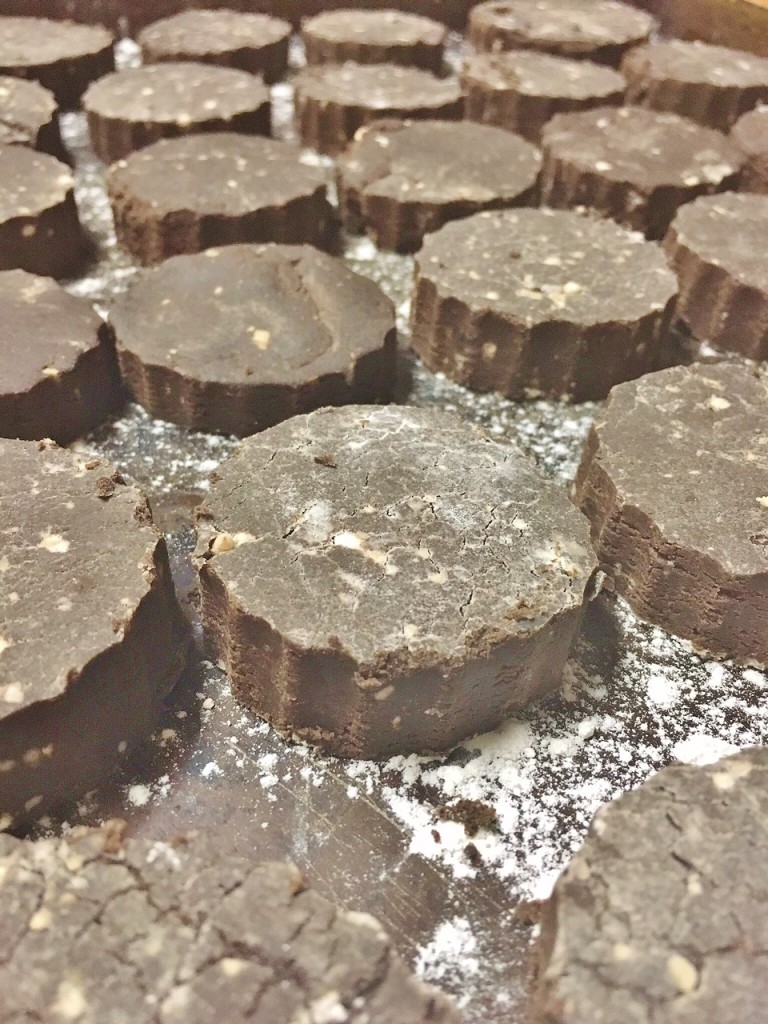On assignment for another article, Alfonso and I made this Spanish roscón de reyes to tell a little bit about the integration of Spanish culture in our American lives. It seemed to be the perfect food representation of our two cultures coming together for the holidays. A Spanish pastel –meant to hide a small figurine bestowing luck upon its finder- houses a whole, but imperfect seashell found in the sands of Folly beach a few years ago. Makes you want to swing your long, sandy beach hair over your shoulder as your fingers snap artfully above your head in a dramatic ‘¡Olé!’.
The story goes that little Spanish children wait for the Three Wise Men (Los reyes magos) to bring them gifts on…January 6th! Christmas Eve and Christmas Day are usually reserved for big, GIANT meals that last for hours and into the wee hours of the morning. Sobremesa on top of sobremesa on top of sobremesa. While most of the eating and gorging is done on actual Christmas, there is one special treat reserved for el Día de los Reyes Magos. The roscón de reyes.
It is baked like yeast bread, but sugary. There is some kneading and shaping that has to go on, but not too much- keep it light and fluffy.
I would like to make a very important and possibly legally-obligated statement: Please be aware that there is a hard seashell in your pastry. It could crack your tooth. Please be aware that there is a hard seashell in your pastry. It could crack your tooth. And one more time for the folks in the back: Please be aware that there is a hard seashell in your pastry. IT COULD CRACK YOUR TOOTH.


I say the above because right as he took his very first bite of this year’s very first roscón de reyes, Chef Fonz cracked our very hard Folly Beach seashell. And he is lucky he didn’t crack his tooth.
The sweet whipped cream in the middle and the goodies and glaze on top make it the perfect breakfast/dessert cake to munch while opening shiny packages, provided you are aware of what’s on your fork.
Alfonso and I usually make the Christmas cake on the 6th to eat as we exchange presents with each other (We celebrate with family and friends on the 24th and 25th of December.), but you can make it for Christmas Day and add a little español to your celebration!
Roscón de Reyes (Three Kings Cake)
4.5 c flour
1 packet active, dry yeast
1/2 c whole milk
1/2 c warm water
3/4 c softened butter
2/3 c powdered sugar
2 large eggs
1 shot of brandy
3 oz. orange tea
zest of 1 limon
zest of 1 orange
pinch of salt
For the topping:
1 egg
2 T water
1/2 cup sliced almonds
1/4 cup dried cranberries
1/4 cup dried, diced dates
For the filling:
2 cups heavy cream
3/4 cup powdered sugar
For the glaze:
1/2 c powdered sugar
juice 1/2 orange
Disolve the yeast in warm water (100-110 degrees). Add milk and 3/4 c of the flour and mix. Form a ball with the dough (Add more flour, 1 T at a time, if dough is too sticky.) and keep in a warm place covered with a wet towel until doubled in size.
In a large mixing bowl add the rest of the flour, sugar, salt, and zest. Mix together. Then add the eggs, butter, brandy, and mix everything together. Combine with the yeast ball, making one large ball and let rest and rise under a dry towel for about 1 hour, until doubled in size.
Place on a cookie sheet with floured parchment paper underneath and begin pulling the dough in the middle to make a large “doughnut”. Add in the small figure (covered in plastic wrap) to the dough in a secret spot. Bake at 100 degrees (or the lowest your oven will go) for 1 hour. Remove from the oven and brush with an egg wash (the egg and water for the topping mixed together). Then, spread out the cranberries, dates, and almonds over the cake and press slightly into the dough. Return to the oven and bake at 425 degrees for 20-25 minutes.
Meanwhile, beat the heavy cream and sugar on high until whipped cream has formed. Once the cake is done and cooled, slice it in half and fill with the whipped cream. Mix the powdered sugar and the orange juice to form a glaze and drizzle on top.
The other thing we realllly like to make around the holidays are mantecados. Last year I ordered some online from an American company that imports Spanish products. They were like Sevilla in a mouthful.
But this year we decided to make our own. Two kinds: dark chocolate (a little nontraditional) and almond.
We are tweaking a recipe we started working on last year. The greatest challenge is extracting an authentic Spanish flavor while using American ingredients, temperatures, and measurements. When we have a final Castejón version we are satisfied with, we will be sharing!
What makes your families’ holidays different and special? What do you do if you can’t be with your loved ones over the holidays? Follow us behind-the-scenes on Snapchat (thecastejons) this holiday season and keep up with our daily eats on Instagram (@thecastejons). Happy Holidays, everyone!











